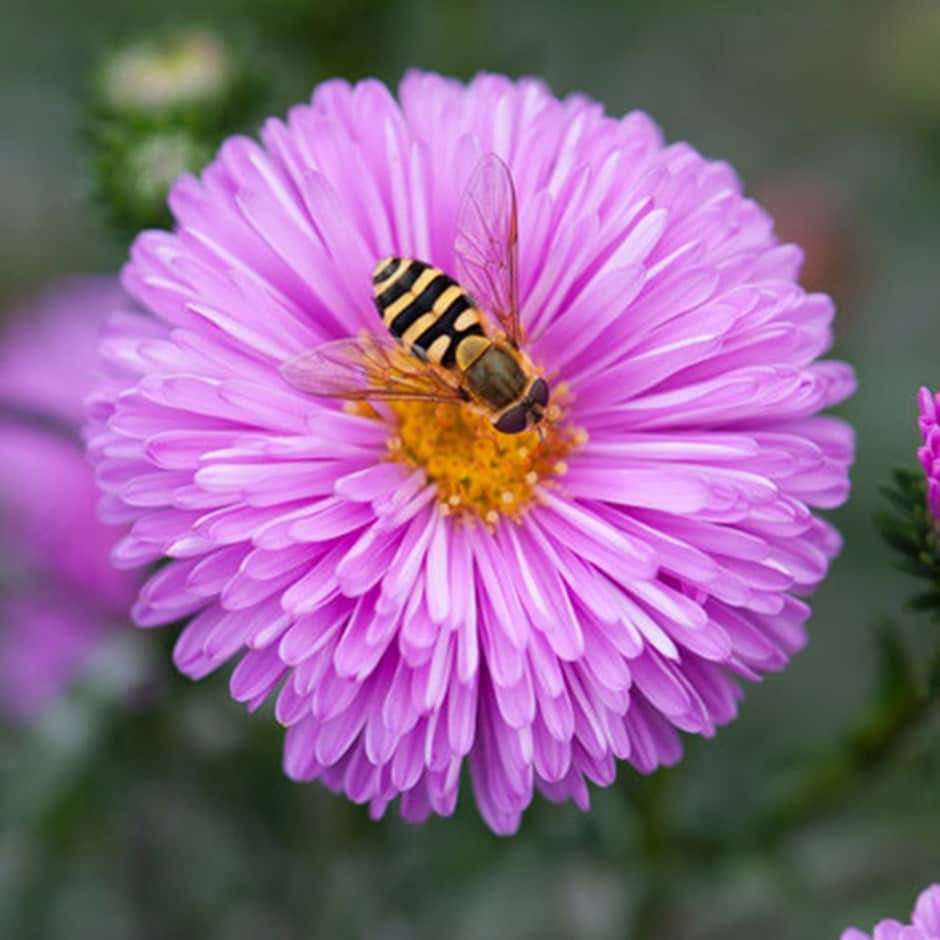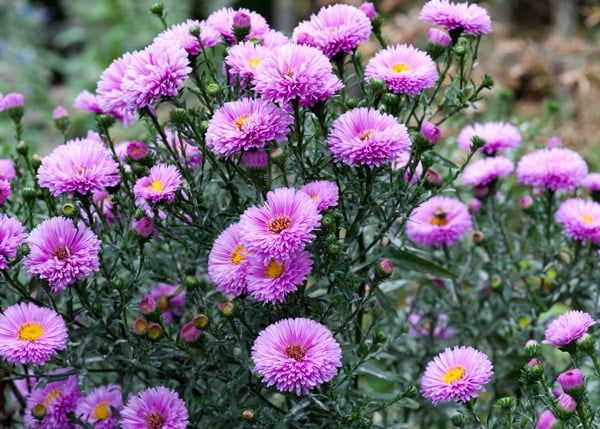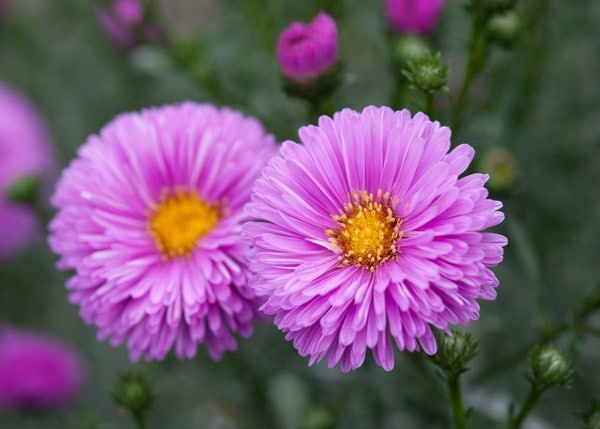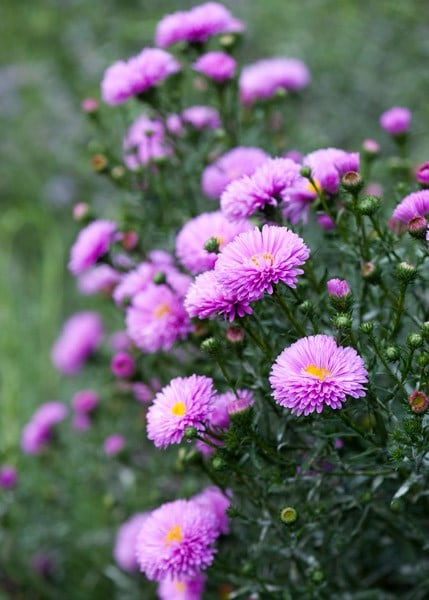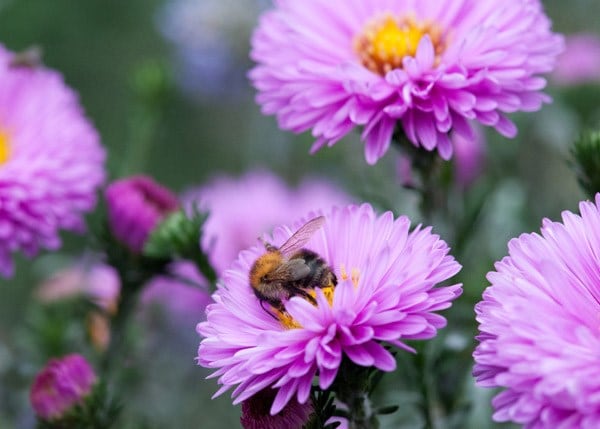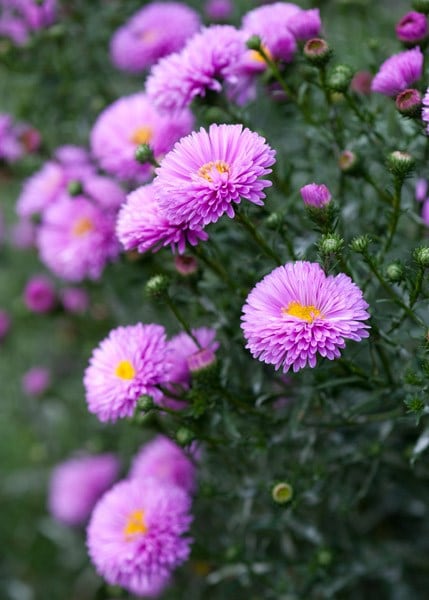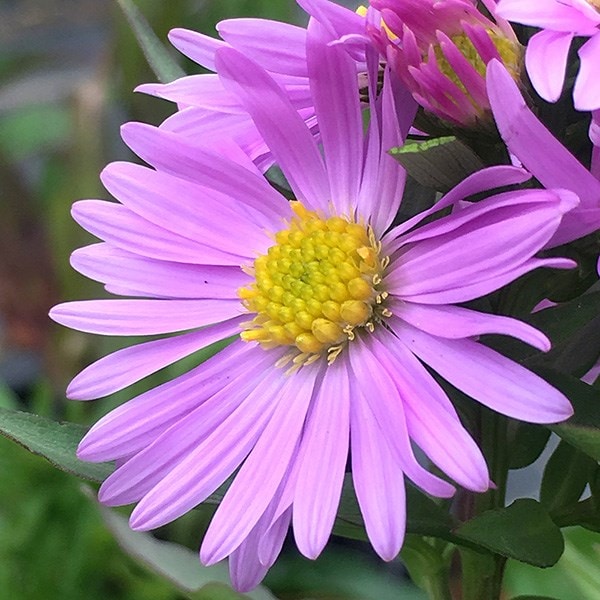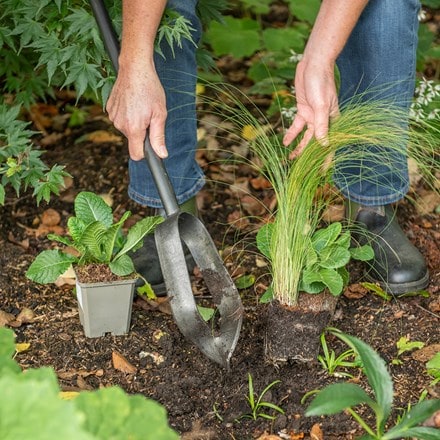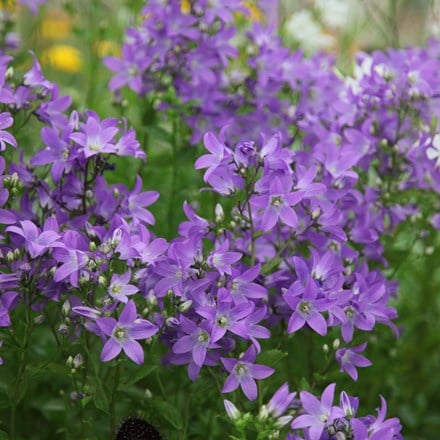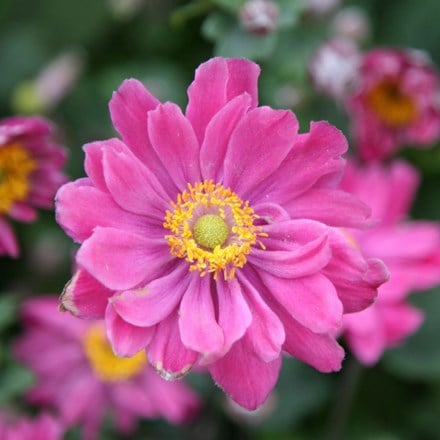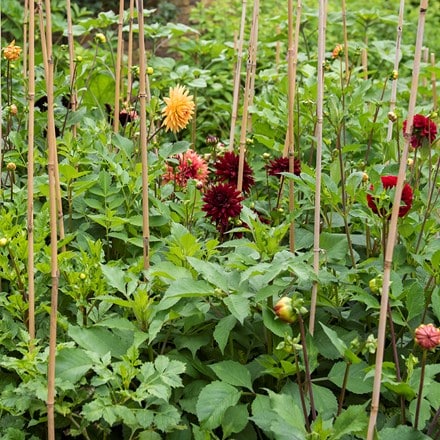Symphyotrichum novi-belgii 'Patricia Ballard'
Michaelmas daisy
- 9cm pot
- £9.99
- In stock (shipped within 2-3 working days)
- 3 × 9cm pots
- £19.99 £6.66 each
- In stock (shipped within 2-3 working days)
- 2 litre pot
- £15.99 £19.99
- In stock (shipped within 2-3 working days)
- 3 × 2 litre pots
- £39.99 £49.99 £13.33 each
- In stock (shipped within 2-3 working days)
Delivery options
- Standard £5.99
- Position: full sun or partial shade
- Soil: well-cultivated, fertile, moist soil
- Rate of growth: average
- Flowering period: August to October
- Hardiness: fully hardy
A strong growing New York aster that rarely succumbs to mildew, but does produce a dazzling display of bright mauve-pink daisies (which can be near-singles to semi-doubles) in late summer and autumn.
The flowers are attractive to bees and the resulting seedheads can attract birds, so this is a gem for wildlife-friendly schemes. Symphyotrichum novi-belgii 'Patricia Ballard' will be equally at home in cottage garden borders, or more naturalistic planting schemes where it will associate well with ornamental grasses.
The flowers are attractive to bees and the resulting seedheads can attract birds, so this is a gem for wildlife-friendly schemes. Symphyotrichum novi-belgii 'Patricia Ballard' will be equally at home in cottage garden borders, or more naturalistic planting schemes where it will associate well with ornamental grasses.
Asters prefer moist but well-drained, loamy soil rich in organic matter. If your soil is heavy or clay-based, improve it by incorporating compost or well-rotted manure. Consistent moisture is important, especially during dry spells.
Space the plants about 45-60cm (18-24in) apart to allow room for growth and ensure good air circulation. This is especially important for Symphyotrichum novi-belgii, which can be more prone to mildew in late summer.
Insert twiggy prunings or slender canes early in the season to give support as the plants grow. Taller cultivars may flop without it, especially in exposed areas.
To encourage bushier growth and more flowers, pinch back the stems when the plants are about 15-20cm (6-8in) tall - you can also remove spent flowers to extend the blooming period.
Avoid overhead watering where possible to help prevent mildew. Water at the base of the plant to keep the foliage dry.
Leave the top growth on through winter to protect the crown and provide shelter and food for wildlife. Cut back to ground level in late winter or early spring when new growth appears.
Apply a 5-7cm (2-3in) mulch around the base in spring to help retain moisture and suppress weeds. Keep mulch clear of the crown to prevent rotting.
Space the plants about 45-60cm (18-24in) apart to allow room for growth and ensure good air circulation. This is especially important for Symphyotrichum novi-belgii, which can be more prone to mildew in late summer.
Insert twiggy prunings or slender canes early in the season to give support as the plants grow. Taller cultivars may flop without it, especially in exposed areas.
To encourage bushier growth and more flowers, pinch back the stems when the plants are about 15-20cm (6-8in) tall - you can also remove spent flowers to extend the blooming period.
Avoid overhead watering where possible to help prevent mildew. Water at the base of the plant to keep the foliage dry.
Leave the top growth on through winter to protect the crown and provide shelter and food for wildlife. Cut back to ground level in late winter or early spring when new growth appears.
Apply a 5-7cm (2-3in) mulch around the base in spring to help retain moisture and suppress weeds. Keep mulch clear of the crown to prevent rotting.
Goes well with
Pinpoint hole maker for young plants/bulbs - Crocus by DeWit
small
£49.99
In stock (shipped within 2-3 working days)
